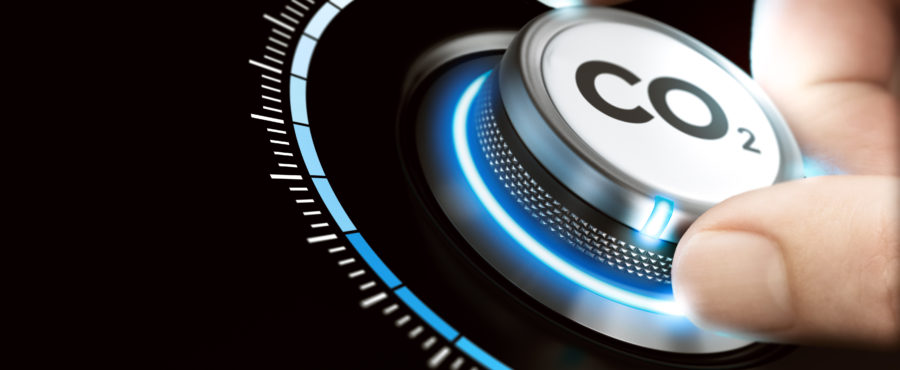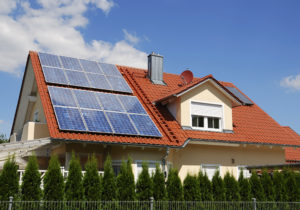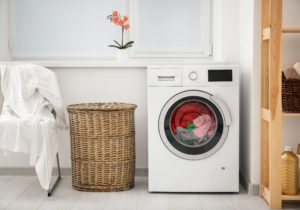
Carbon dioxide (CO2) is one of greenhouse gases the excessive emission of which contributes to unwanted climate change in the world. It is a product of burning fossil fuels like oil and coal and according to Eurostat data[1] production of CO2 in Poland in 2018 alone increased by 3.5%. A significant contribution to polluting the environment is made by households and thus, it is worthwhile to analyse how our own behaviours can limit CO2 emission.
Scientists are raising an alarm that all over the world carbon dioxide is produced in quantities too big to be absorbed and converted into oxygen by forests. The scale of the problem is so huge that it cannot be solved even by massive planting of trees. It is therefore required to limit the burning of fossil fuels. However, as Eurostat informs, in 2018 as much as 10.3 per cent of CO2 produced in the European Union came from Poland. Further, nearly 1/5 of EU’s greenhouse gases is generated in households. If we fail to limit air pollution, then, according to Crowther Lab[2] from the Swiss Federal Institute of Technology in Zurich, in 30 years’ time Warsaw will be facing temperatures of Tbilisi, Georgia, where average annual temperature reaches 13.3°C (in Warsaw this figure totals 7.7°C)[3]. How can we then protect the environment and cut CO2 emission ourselves?
Low-emission heating and energy-saving home appliances
One of the main factors responsible for harming the environment and excessive emission of CO2 is obsolete heating of households. According to estimates, nearly 70 per cent of several million single-family houses in Poland use coal boilers as their primary heating sources. Given the absence of proper thermal insulation, the heating of water and houses may generate as much carbon dioxide during the year that it would take three thousand trees to absorb it. As pointed out by Anna Sawicka, Chief Ecological Strategy Development Specialist in Bank Ochrony Środowiska (BOŚ), one of the ways to improve air quality is to select low-emission heating sources. “It is important to have an effective household heating system and the heating source should not generate excessive emission of burning fumes into the atmosphere. It is necessary to ensure good thermal insulation of the building, which will limit the house’s demand for heating and translate into lower CO2 emission,” stresses Anna Sawicka.
Environment-friendly solutions, which are becoming more and more popular and keep replacing ineffective coal-based systems, are natural gas systems or heat pumps. The former is cheap to buy and install and additionally, financing them may be supported by low-interest loans for the purchase and replacement of boilers and for thermal insulation (they are offered, among others, by BOŚ, which has started cooperation with PGNiG – the national natural gas operator and provider). On the other hand, investing in a heat pump is a good proposal for those who want to completely eliminate the use of fossil fuels. This solution involves a higher initial cost and electricity bills, because heat pumps use electric power. CO2 emission may also be reduced by choosing the right lighting and home appliances. It is useful to replace regular light bulbs with energy-saving equivalents and when buying new home appliances, choose those with top energy classification. This will reduce consumption of grid electricity and consequently, contribute to lower CO2 emission generated by the power plant.
Everyday decisions and routines
In our daily routines we do not think how little is needed to reduce carbon emission. Various habits result in wasting electricity. Higher power consumption results, for instance, from boiling too much water in our kettle, putting warm meals into the fridge or leaving devices in the stand-by mode. “A significant portion of electric power is simply wasted. It is worthwhile to learn certain habits, like turning off lights, switching off and unplugging appliances which we are not using, boiling as much water as we need, or cooling meals before we put them into the refrigerator. This will reduce not only the harmful emission but also our bills,” explains Anna Sawicka.
To reduce CO2, it is equally important to use our cars in a reasonable manner. Nearly 30 per cent of EU’s total emission comes from transport, 72 per cent of which is generated by road transport[4]. This is why it is important to analyse whether we really need to use our car that often or maybe we may replace it with public transport or bicycle.
Pro-ecology habits at work
To really limit harmful CO2 emission, it is important to implement multiple changes. Another thing that matters is our behaviour at work – a place where we spend a significant part of the day. “Simple behaviours result in big effects on a global scale. It is important to pay attention to building environment-friendly corporate culture inside the company. Not overusing air conditioning, switching off unnecessary light or unplugging of devices from outlets are just examples of good habits contributing to lower CO2 emission, which environmentally friendly organisations apply,” adds Anna Sawicka.
[1] https://ec.europa.eu/eurostat/documents/2995521/9779945/8-08052019-AP-EN.pdf/9594d125-9163-446c-b650-b2b00c531d2b
[2] https://journals.plos.org/plosone/article?id=10.1371/journal.pone.0217592
[3] https://pl.climate-data.org
[4] http://www.europarl.europa.eu/news/pl/headlines/society/20190313STO31218/emisje-co2-z-samochodow-fakty-i-liczby-infografika




